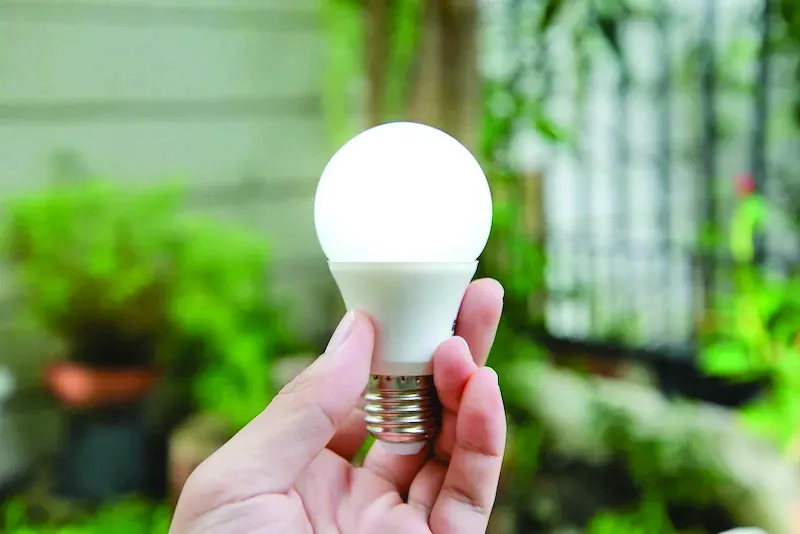Today, grand infrastructure and billion-dollar investments in electric vehicles, hydrogen centres, and solar farms are often at the centre stage in the climate story across the globe, including India. Still, we run the danger in this scale-up competition of forgetting one of our cheapest, most available, and immediately effective climate solutions: one 10-watt lightbulb. India has more than 250 million homes. If all these homes merely turned off just one LED light bulb for four hours daily, the savings would be over 3.6 ter- awatt-hours, almost 30% of Bhutan’s total electricity consumption for a year. But beyond wattage, the impact is revolutionary, 2.9 million tonnes CO2 saved, equivalent to removing ~6,00,000 petrol vehicles from India’s roads.
This can lead to a quiet and effective environmental revolution. Lighting accounts for 20-30% of home electricity consumption. Homes comprise almost 24% of India’s overall electricity requirement. In other words, lighting practices, not solely lighting technology, are a climate policy necessity. Office corridors burn after-hours, skyscrapers glimmer all night, and motion detectors supplant awareness. Indeed, India’s UJALA initiative has been a success story.
Over 360 million LEDs have been distributed since 2015, saving 47 billion kWh annually and eliminating 37 million tonnes of CO2 emissions. However, whereas technology has been deployed, behavioural inertia still exists. Smart techno- logical solutions must go hand in hand with behavioural habits; technology alone cannot substitute for smart, consistent human behaviour. Encouraging such behavioural shifts in electricity usage can significantly reduce the need for additional investments in new power infrastructure by lowering peak demand.
That’s a fiscal control that cannot be ignored for a country, particularly when all that needs to happen is a flip of a switch. One 10W LED lightbulb utilised judiciously can save Rs 150 annually for every house, a small amount for each home, but an amount that totals Rs 3,750 crore for national savings when extrapolated across 250 million houses. This does not require subsidies, net metering, or mandating through policy. It requires awareness and leadership through example, particularly from urban India, the population which consumes electricity at the highest per capita rate and has the lowest incentive for conservation.
On a global basis, behaviour change has been estimated to contribute as much as 20% of the reduction in emissions required to stay below 1.5°C warming in 2030, equivalent to 1.8 billion tonnes CO2 in a year. This is, though, the most under-explored lever for change. It’s not a regressive act, but rather intelligent economics and good citizenship, to light only where we live. Like the “One Bulb, One Room” campaign, which could resonate throughout intelligent cities and satellite towns, individual small steps, monumental impact. Let’s get the climate politics right. We praise electric SUVs and solar panels on roofs, but we don’t often commend the person who switches off a light switch. Climate change consists not just of system change, but behavioural change. That has to start not just in policy circles but also around living room tables and board tables.
The future chapter in India’s energy narrative can be as luminous as its switch from incandescent bulbs to LEDs; only if we com- bine that radiance with restraint, wisdom, and pride. The power of one bulb is symbolic of this grassroots revolution. It represents a choice to care, conserve, and live with intention. Let this be the new normal: light only where you are. In the struggle against carbon, the greatest watt is the one we will not use!
Dr Kuldeep Singh, Associate Professor, Symbiosis Institute of Business Management, Pune and Dr Neha Seth, Associate Professor, School of Management Studies, Indira Gandhi National Open University, New Delhi.























